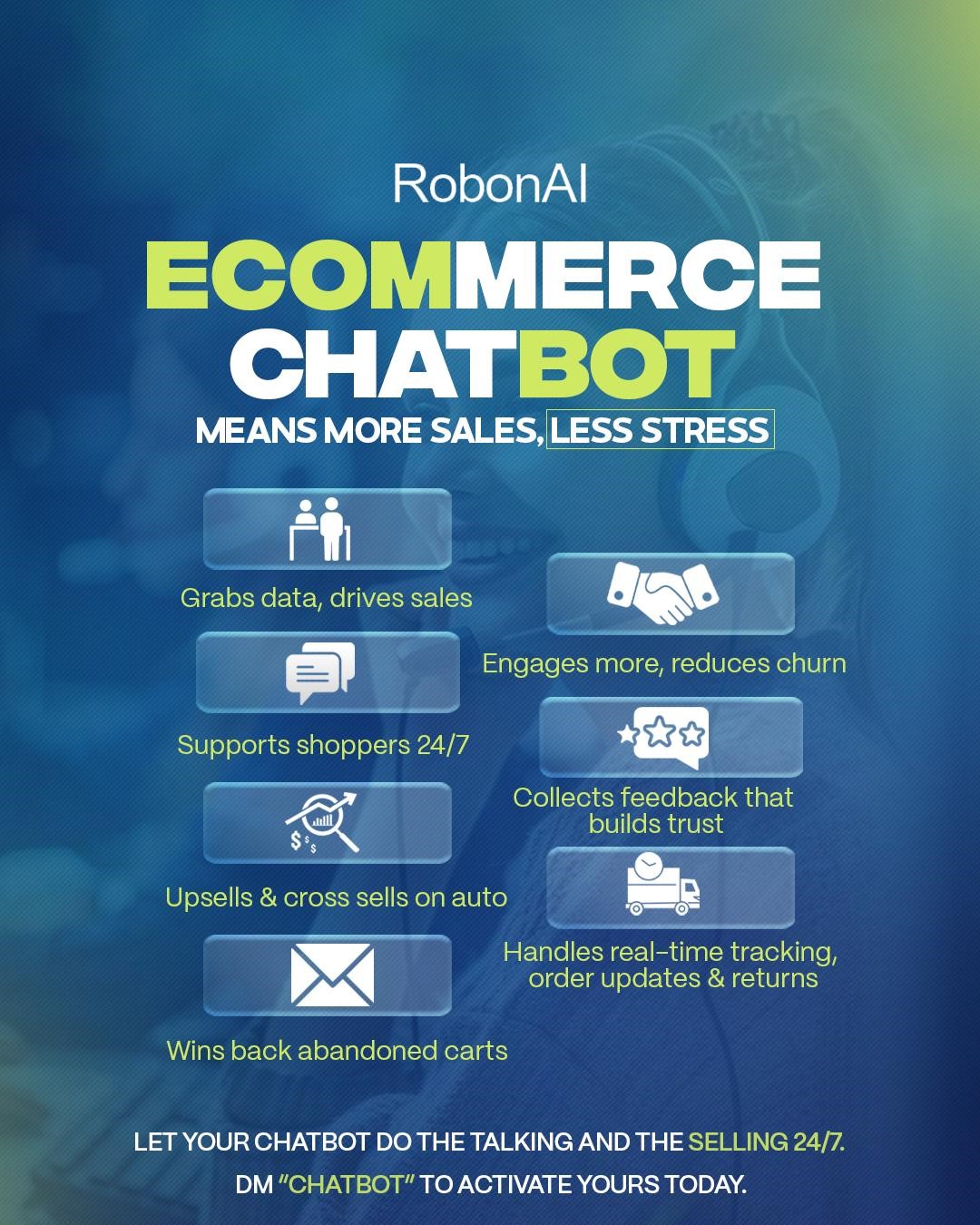
In 2025, ecommerce is no longer just about having a fast website and sleek product pages.
The battle for attention, conversion, and retention is being won (or lost) in conversations.
And the biggest weapon? → AI-powered ecommerce chatbots.
These bots don’t just greet customers. They:
According to Juniper Research, ecommerce transactions via chatbots will hit $142 billion in 2025.
And with 70% of customers preferring real-time messaging over emails or calls (Zendesk CX Report, 2024), ecommerce brands are racing to integrate conversational AI into their entire customer journey.
Let’s face it:
⛔ Most ecommerce brands reply to pre-sale questions too slowly.
⛔ Sales reps are offline when your hottest leads are active.
⛔ Cart recovery emails arrive after the sale is already lost.
⛔ Live chat teams are overworked and miss high-value customers.
In a world where 15-second attention spans meet 24/7 global shopping, traditional support just can’t keep up.
This is where AI ecommerce chatbots become a brand’s conversion engine.
An AI chatbot is a software agent powered by natural language processing (NLP), trained to:
Unlike rule-based bots that follow rigid scripts, today’s AI chatbots:
They work across:
Greets every visitor with a personalized message based on referral source, location, and behavior.
“Hi Sarah! Looking for skincare under $50? Let me show you our bestsellers.”
Detects abandoned carts and sends a reminder with a cart link + limited-time offer.
“You left 3 items in your cart. Here’s 10% off to complete your order within the next 30 mins.”
Turns passive browsing into guided discovery using a 3–5 question quiz inside chat.
“What’s your skin type?” → “What concerns are you solving?” → “Here’s your match.”
After checkout, bot sends:
Instantly resolves:
Handles sizing, color, ingredient, or availability queries in real-time—without waiting for agents.
Recognizes repeat VIP customers and fast-tracks their experience with priority support and early access offers.
Confirms Cash on Delivery orders automatically via WhatsApp or chatbot before shipping to reduce RTOs.
H&M deployed chatbot via Google Assistant and on its website to help users browse outfits, check sizing, and confirm product availability.
Result: Boosted conversions by 29% and improved re-engagement by 35%.
Sephora Virtual Artist on Facebook Messenger offers personalized beauty advice and product recommendations based on quizzes and facial recognition.
Result: 11% higher basket size; 2.4x higher engagement.
Adidas launched WhatsApp and Messenger bots for promoting limited edition drops and answering queries in real-time.
Result: 80%+ open rates on WhatsApp, with chatbot-led sales accounting for over $2 million in the first campaign.
Levi’s chatbot “Virtual Stylist” assists customers in finding the perfect fit by asking questions about size, style, and preferences.
Result: 18% boost in conversions, 35% fewer return-related support tickets.
Robonai’s ecommerce chatbot system is not just another plug-in.
It’s an AI-driven sales assistant built for modern conversion paths.
Your website is live. Your traffic is growing.
But every second that your customer doesn’t get an answer…
You lose them to a competitor.
AI chatbots aren’t just support tools—they are sales machines that:
If you’re serious about ecommerce growth in 2025, let your bots do the selling.
👉 Get a Free AI Chatbot Demo
👉 See Real Ecommerce Use Cases
👉 Talk to a Robonai AI Strategist
Robonai will build it for you—trained, tested, and tailored to sell.
Yes. Clients using Robonai’s ecommerce chatbots have reported 20–40% higher conversions and 30–70% cart recovery.
No—but it will free them from repetitive questions so they can focus on high-touch tasks.
In as little as 3 days, Robonai will have your store ready with pre-trained ecommerce flows
Yes. We integrate with all major ecommerce platforms.
Yes. Book your free demo here.
Post Tags :
Share :